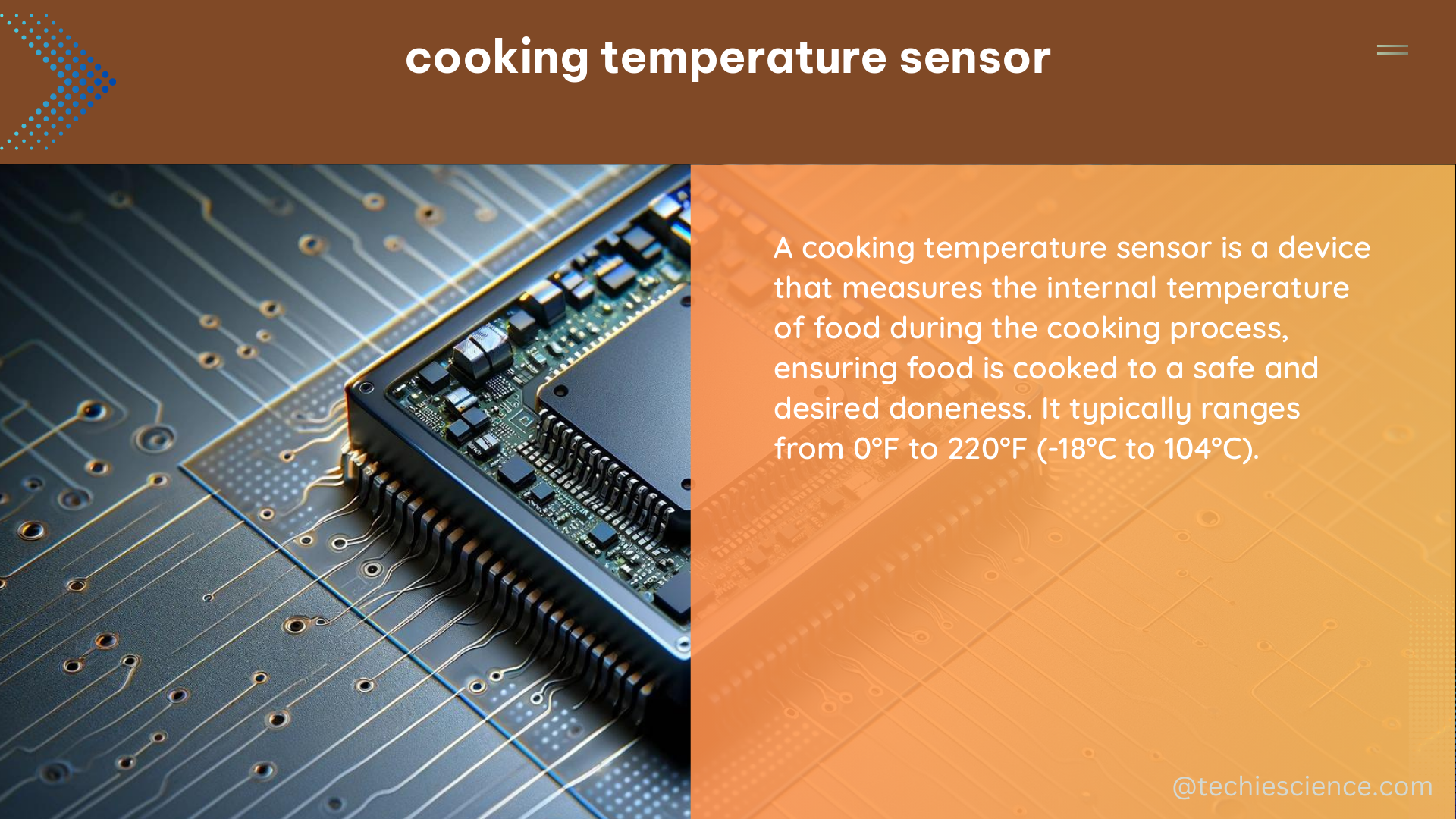Cooking temperature sensors are essential devices used in various cooking appliances, such as ovens, stoves, and grills, to ensure safe and even cooking. These sensors play a crucial role in measuring the temperature of food or cooking surfaces during the cooking process, allowing for precise temperature control and monitoring.
Technical Specifications of Cooking Temperature Sensors
The technical specifications of cooking temperature sensors are crucial factors to consider when selecting the right sensor for your needs. These specifications can include:
Temperature Range
- Cooking temperature sensors can have a wide range of temperature measurement capabilities, typically ranging from -50°C to 350°C (-58°F to 662°F).
- High-end sensors may have an even wider temperature range, extending up to 500°C (932°F) or more, catering to specialized cooking applications.
Accuracy
- Cooking temperature sensors are designed to provide accurate temperature readings, with typical accuracy levels ranging from ±0.5°C to ±1°C (±0.9°F to ±1.8°F).
- Premium sensors can achieve even higher accuracy, with some models boasting an accuracy of ±0.25°C (±0.45°F) or better.
Response Time
- The response time of a cooking temperature sensor refers to the time it takes for the sensor to detect and display a change in temperature.
- Typical response times for cooking temperature sensors range from 1 to 10 seconds, with faster response times allowing for more precise temperature monitoring and control.
Sensor Type
- Cooking temperature sensors can utilize various sensing technologies, such as thermocouples, resistance temperature detectors (RTDs), or thermistors, each with its own advantages and applications.
- Thermocouples are widely used due to their ruggedness, wide temperature range, and relatively low cost, while RTDs offer higher accuracy and stability.
Connectivity
- Many modern cooking temperature sensors feature wireless connectivity, allowing for remote monitoring and control via smartphones, tablets, or smart home devices.
- Wired sensors are also available, often integrated directly into cooking appliances for seamless integration and control.
Test Procedures for Cooking Temperature Sensors

To ensure the performance and compliance of cooking temperature sensors, various test procedures have been established by organizations like the Department of Energy (DOE).
DOE Test Procedures
- The DOE has developed test procedures for consumer conventional cooking products, including cooking tops, to evaluate their energy efficiency and compliance with energy conservation standards.
- These test procedures involve measuring the temperature distribution and heat-up times of cooking surfaces, as well as the energy consumption of the appliances.
- The results of these tests are used to establish performance standards and energy efficiency ratings for cooking appliances.
Sensor Calibration and Validation
- Cooking temperature sensors must undergo rigorous calibration and validation processes to ensure their accuracy and reliability.
- This typically involves comparing the sensor’s readings against a reference standard, such as a NIST-traceable thermometer, to verify the sensor’s performance across its entire temperature range.
- Regular calibration and validation are essential to maintain the sensor’s accuracy and prevent drift over time.
Cooking Temperature Sensors in DIY Projects
Cooking temperature sensors can also be utilized in various DIY (Do-It-Yourself) projects, allowing for precise temperature control and monitoring in home cooking setups.
Sous Vide Cooking
- Sous vide cooking involves cooking food in a water bath at a precisely controlled temperature, ensuring even and consistent cooking.
- By using a cooking temperature sensor and a controller, DIY enthusiasts can build their own sous vide setups, maintaining a consistent water temperature within ±0.1°C (±0.18°F) or better.
Smokers and Grills
- Temperature sensors can be integrated into DIY smokers and grills to monitor and control the cooking temperature, ensuring optimal results for smoked or grilled meats and other foods.
- These sensors can be connected to digital controllers or smartphone apps to provide real-time temperature monitoring and adjustments.
Oven and Stove Modifications
- For home cooks who want more precise temperature control in their ovens or stoves, cooking temperature sensors can be added as a DIY upgrade.
- These sensors can be integrated with custom controllers or smart home systems to provide advanced temperature monitoring and automation features.
Conclusion
Cooking temperature sensors are essential components in various cooking appliances, ensuring safe and even cooking through precise temperature measurement and control. By understanding the technical specifications, test procedures, and potential DIY applications of these sensors, home cooks and culinary enthusiasts can make informed decisions when selecting and utilizing these devices to enhance their cooking experiences.
References:
- ENERGY INDEPENDENCE AND SECURITY ACT OF 2007 – GovInfo
- cooking-products-snopr.pdf – Department of Energy
- Clean Impact Bond: Mobilizing Finance for Clean Cooking
- Sensing and Sensor Fundamentals – SpringerLink

The lambdageeks.com Core SME Team is a group of experienced subject matter experts from diverse scientific and technical fields including Physics, Chemistry, Technology,Electronics & Electrical Engineering, Automotive, Mechanical Engineering. Our team collaborates to create high-quality, well-researched articles on a wide range of science and technology topics for the lambdageeks.com website.
All Our Senior SME are having more than 7 Years of experience in the respective fields . They are either Working Industry Professionals or assocaited With different Universities. Refer Our Authors Page to get to know About our Core SMEs.